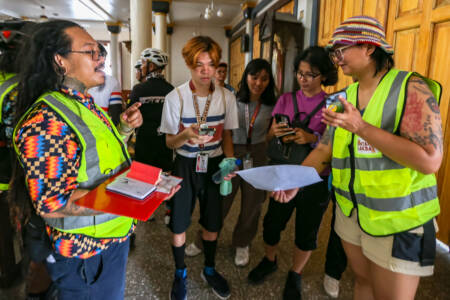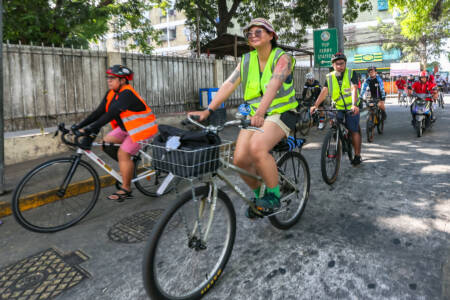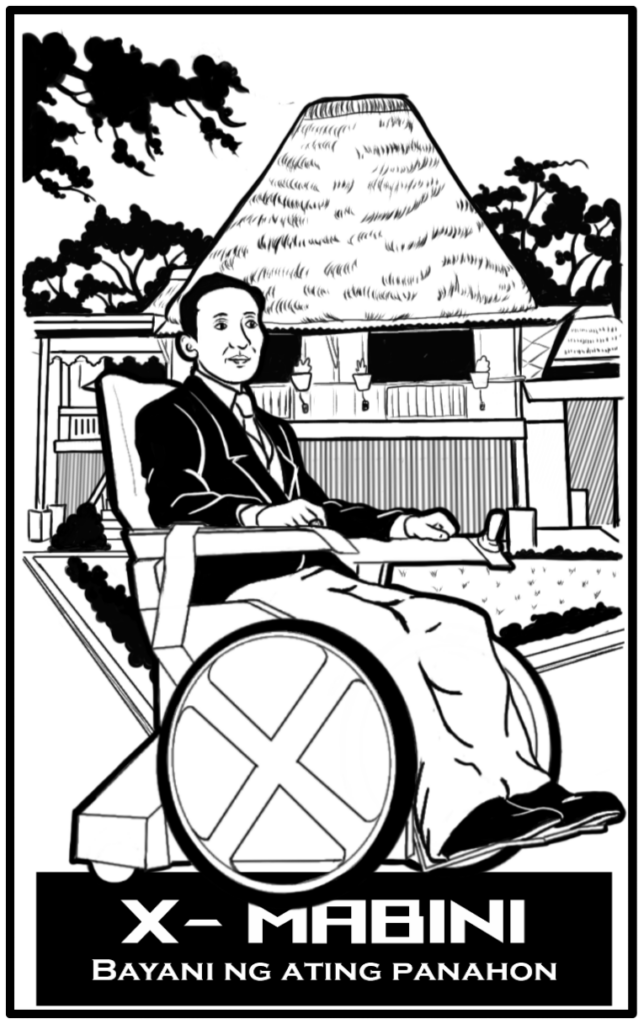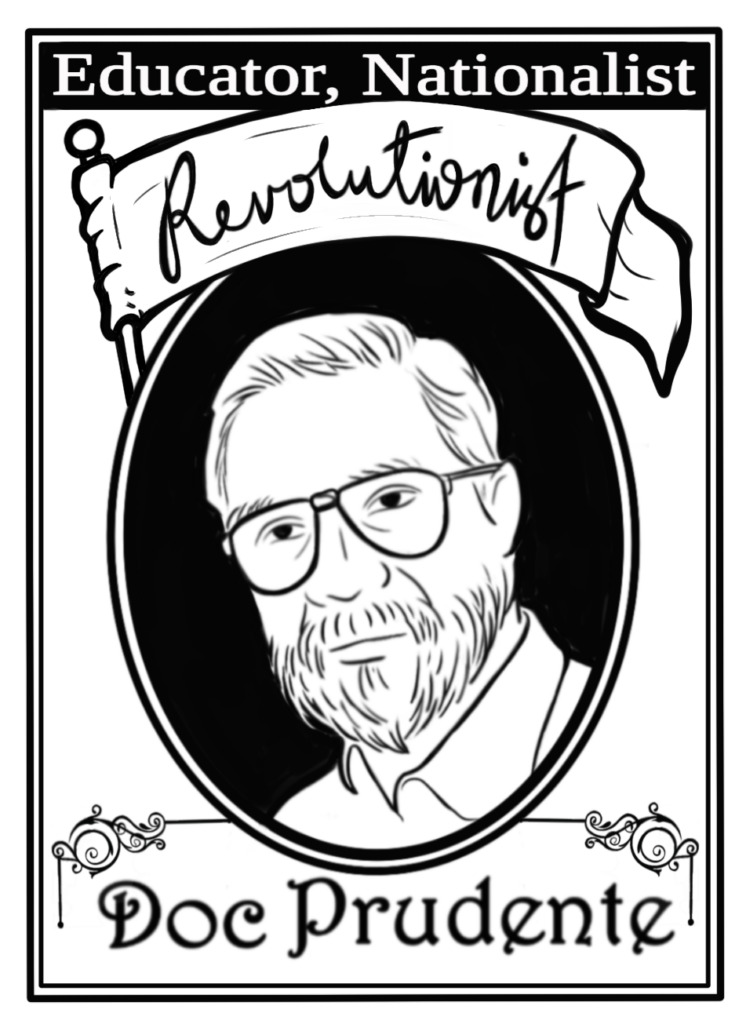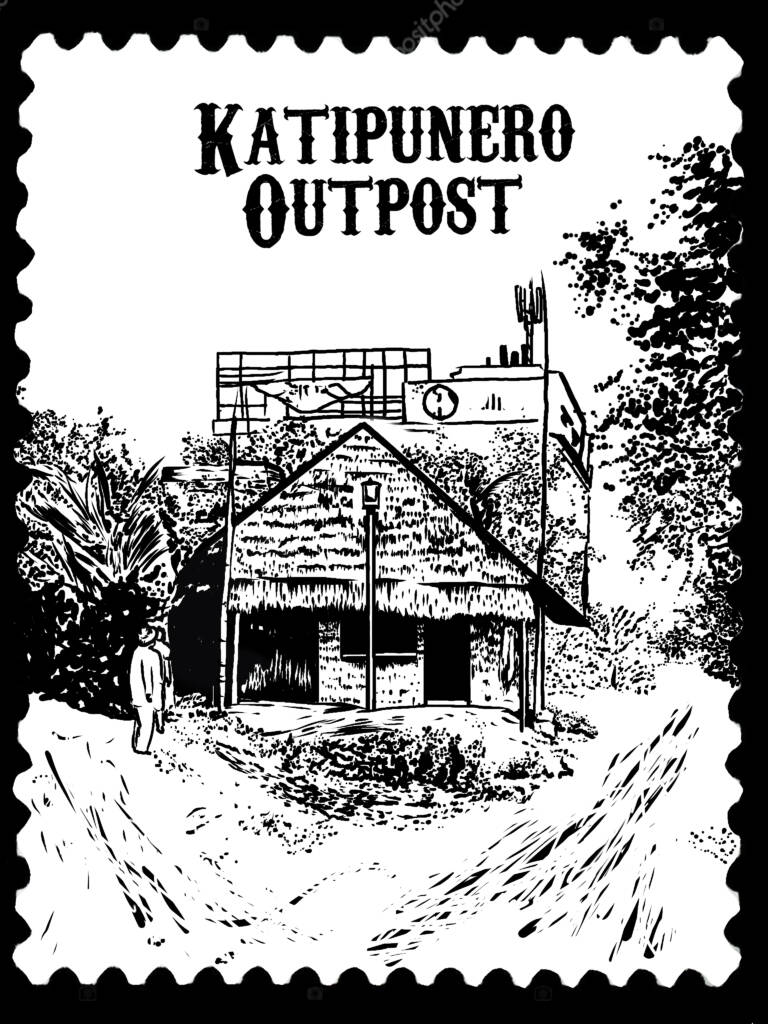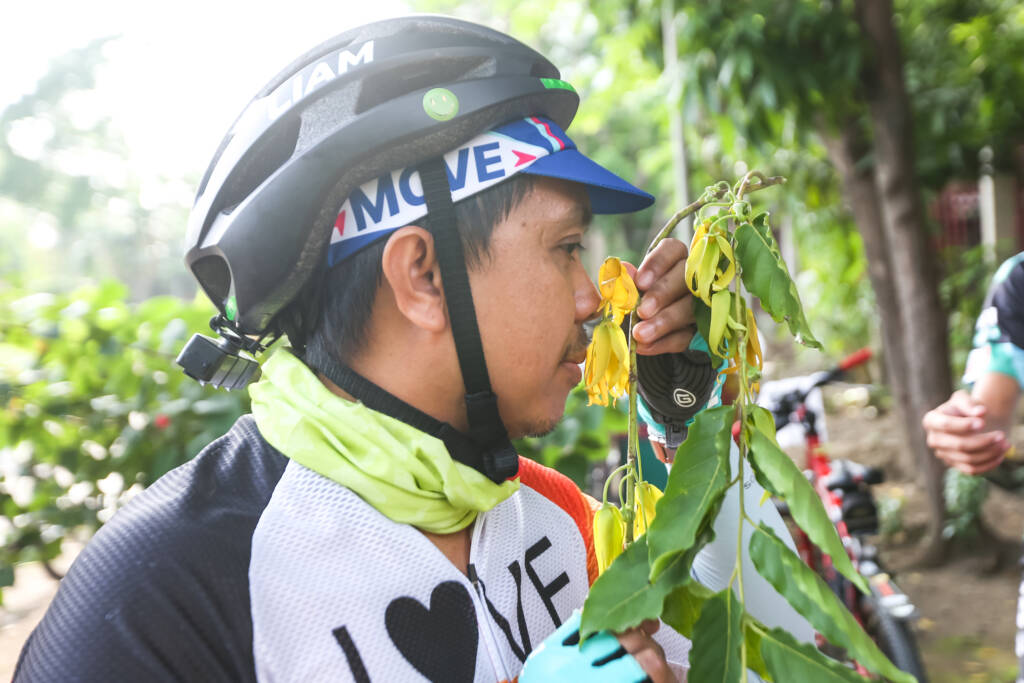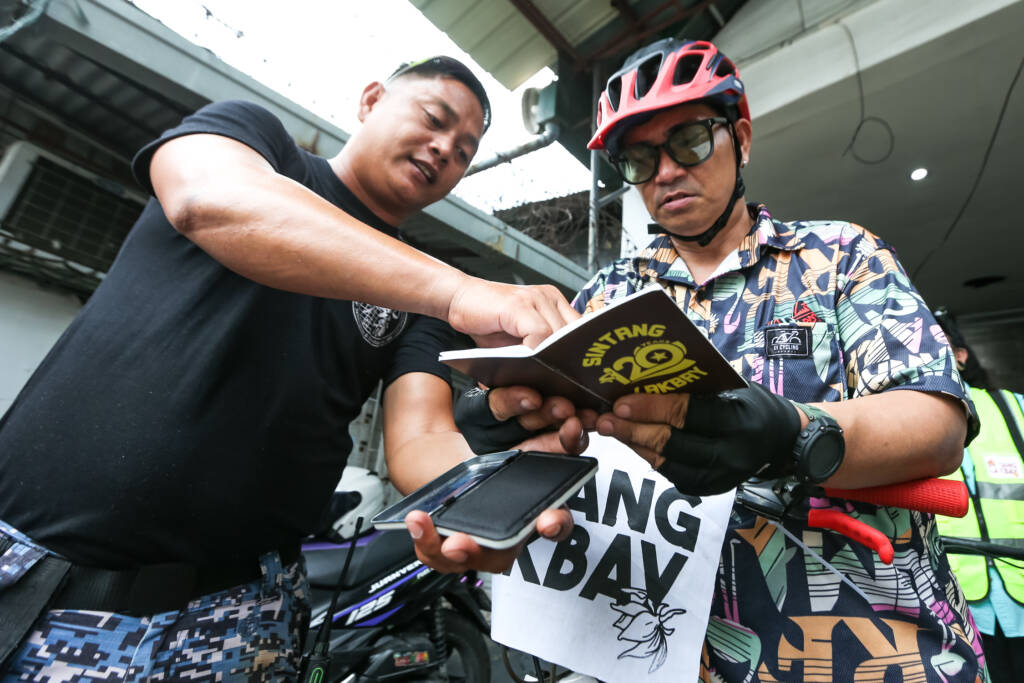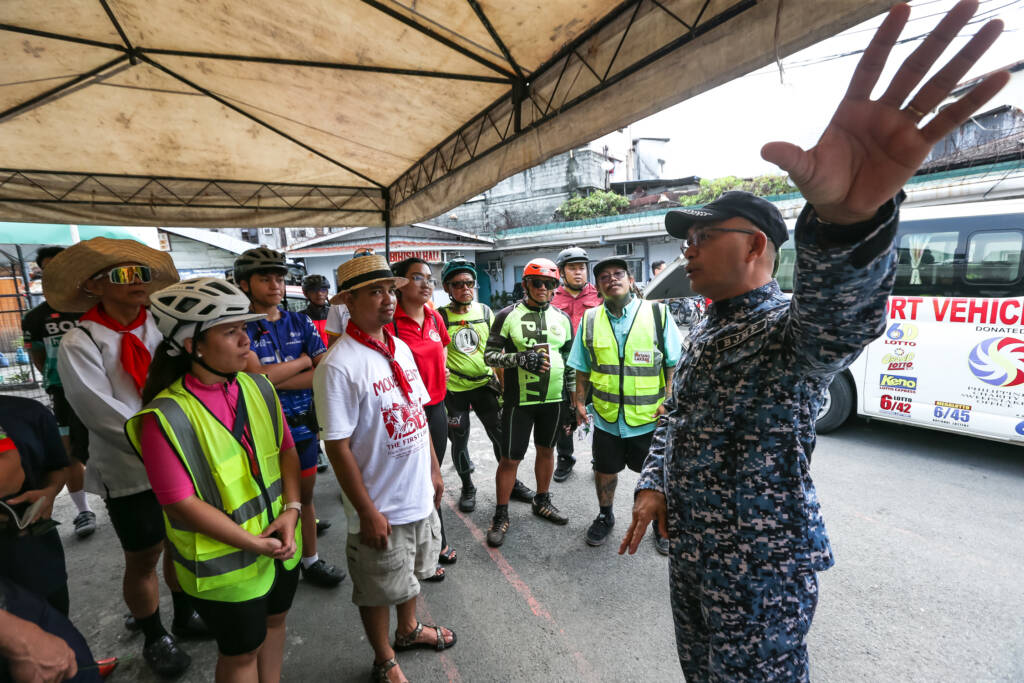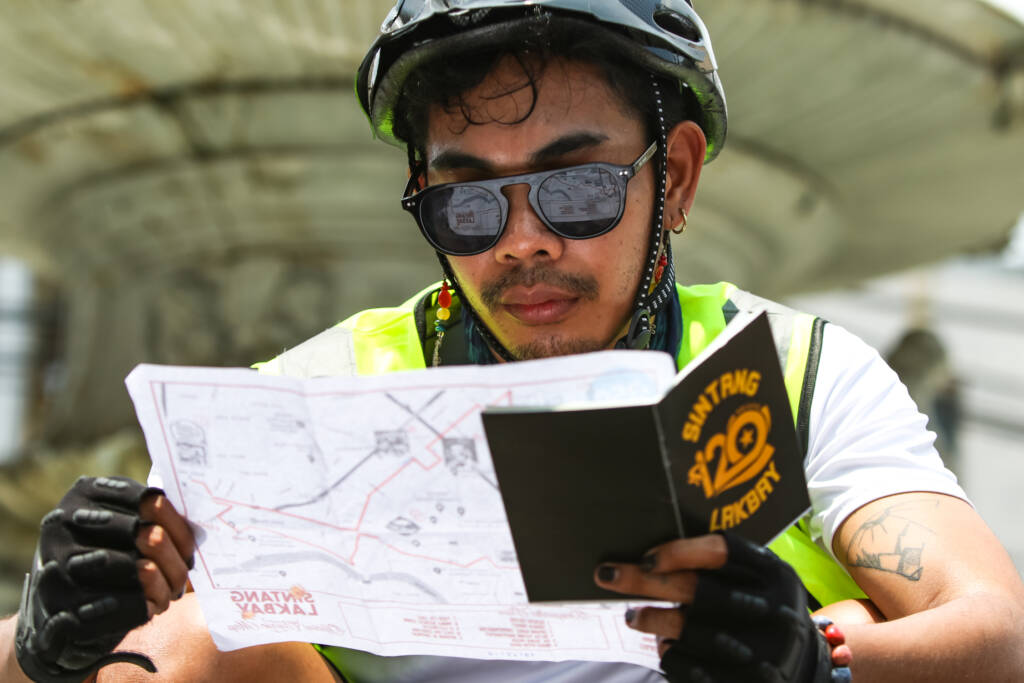Sintang Lakbay: A Historical Walk and Bike Tour
It is not often that PUP is faced with the colliding tides of modernity and history as pronounced as the currents are in 2024. As the nation embarks on a new orbit, the school is provided another fresh start to get things right.
Sintang Lakbay is is a historical walk and bike ride to promote inclusive mobility by facilitating active interaction with urban landscapes, restoring working-class memory in national history, and mobilizing public contributions to remembering through art and research. It is a collaborative project by The Polytechnic University of the Philippines, 350 Pilipinas, and the Constantino Foundation.
In celebrating its 120th year, PUP reaffirms its dedication to accessible, quality education that cultivates critical thinking and social consciousness. This milestone marks a pivotal moment for the university as it confronts the challenges of historical amnesia and the urgent realities of climate change, embracing its role in shaping a more informed and sustainable future. The history ride, coinciding with Earth Day, underscores the critical role of studying history in understanding past human-environment interactions, to develop pathways that promote sustainable and equitable solutions.
Sintang Lakbay marks the beginning of a series of history tours around PUP campus, promoting inclusive mobility and engaging with urban landscapes to reimagine the past, understand contemporary issues, and shape future actions. Upcoming initiatives include additional bike rides, public art installations, citizen research, and lectures.
Fread De Mesa, of 350 Pilipinas accentuates the transformative power of inclusive mobility amid climate crisis. “Bicycles are a practical tool for holistic climate action, offering a clean, healthy, and affordable solution to reduce transportation pollution, build sustainable communities, and curb carbon emissions causing global warming.” he adds. ‘By promoting inclusive mobility, we not only enable active engagement with urban landscapes but also foster a deeper connection to our working-class roots and historical narratives. This approach serves as a catalyst for change, inspiring communities to take ownership of their future and champion sustainable practices.'”
Clean air is essential for the health and well-being of communities. Poor air quality can lead to respiratory problems, cardiovascular diseases, and other health issues. Advocating with an approach that is beneficial to our health and environment, we are taking a proactive step towards improving air quality by reducing vehicular emissions.
Museo ni Mabini
Bisitahin muli ang silid kung saan namatay si Apolinario Mabini gamit ang Facebook and Instagram Filters
Ang Dambana ni Mabini (Mabini Shrine) ay nagsilbing tahanan ni Apolinario Mabini (1864–1903), ang kinikilalang “Utak ng Himagsikan” laban kapwa sa imperyalismong Espanyol at Amerikano. Ang bahay ito ang pinakaunang kinilala ng Pamahalaan bilang isang makasaysayang dambana (shrine) noong ika-23 ng Hulyo 1941. Ang bahay ay yari sa kahoy, kawayan, at pawid sa kabuuan. Noong 2010, matapos ang makailang-ulit na relokasyon, ay permanente nang nailagak ang Dambana rito sa Mabini Campus ng Politeknikong Unibersidad ng Pilipinas (PUP), sa Sta. Mesa, Lungsod ng Maynila. Dito ay mabibisita rin ang Museo ni Apolinario Mabini na nagpapakita ng ilang mga gamit at memorabilia ng bayani.
Consolidated Growth through Education & PUP Pylon
Naging instrumento ang Sintang Paaralan sa patuloy na pag-unlad ng kabataan bayan. Sa katunayan, ang mga nagsisipagtapos sa Politeknikong Unibersidad ng Pilipinas ang paboritong kinukuha agad sa trabaho ng mga korporasyon.1 Pinapakita nito na ang Sintang Paaralan ay instrumental sa paghubog ng kakayahan ng mag-aaral para sa kanyang hinaharap. Sa katunayan, isang mural na matatagpuan sa Sintang Paaralan ang nagpapakita ng pagnanasa ng kabataan na paunlarin ang kanyang sarili sa pamamagitan ng pag-aaral.
Antique House
Noong Ikalawang Digmaang Pandaigdig, ang Gusaling NDC ay ginamit na kampo ng Pwersang Hapones. Sa kasagsagan ng Labanan para sa Liberasyon ng Maynila, ito ay ginamit na punong-tanggapan ng Pwersang Amerikano (Cabanilla, 1999). Noong 1989, ang Politeknikong Unibersidad ng Pilipinas, kung saan iginawad ang mga pag-aari ng NDC, ay “pinayagang pumasok, okupahan, at kunin ang mga ibinigay na pag-aari” sab isa ng agarang implementasyon ng Memorandum Order blg. 214 na pinirmahan ng dating Pangulong Corazon C. Aquino (Official Gazette, 1989). Sa kasalukuyan, ang gusali ay nasa malubha nang kalagayan at hindi na maaaring makumpuni para magamit sa kinabukasan.
Hippodromo Race Track
Ang kalye ng Hipodromo sa bayan ng Santa Mesa ay dating pag-aari ng pamilyang Tuason kung saan ito ay tinawag na Hacienda de Santa Mesa. Noong 1881 ay inilipat ditto ang isa sa mga sikat na libangan ng mga Pilipino ngayon, ang karera ng kabayo. Ang lupaing ito ay isang bukid at taniman ng mga puno at palay at sa tuwing sasapit ang panahon ng anihan, ang Hacienda ay inaayos upang maging karerahan ng kabayo.
Sta Mesa Fire Station
Ang mga sunog ay ipinagpapalagay na lamang bilang mga “minor news event” kung ikukumpara sa mas mapaminsalang mga sakuna gaya ng mga bagyo at lindol. Sa kabila nito, mula noong unang panahon hanggang sa kasalukuyan, ang mga sunog ay nananatiling isa sa mga pangunahing banta sa mga imprastruktura at mga ari-arian.1 Ang ganitong sakuna ay hindi na bago sa karanasang pangkasaysayan ng Maynila. Ayon nga sa historyador na si Greg Bankoff, madalas na tinutupok ng malalaking sunog ang Kamaynilaan noong kolonyal na panahon. Bilang halimbawa, noong 1583, 1603 at 1628, naabo ng sunog ang katedral, ospital, fuerza, mga gusali at maging ang buong Parian sa Maynila.
Prudente Ambush Site at Altura
The memorial to Doc extolled the qualities of Prudente as teacher, mentor, patriot and humble Filipino; he “was that rare brand of educator and administrator who was able to combine order with change, establishment and activism, and reform and revolution. He was as tireless as the freshest activist in fighting for democracy in his country, even as he led what would eventually become, under his administration, the country’s largest state university.”
Warehouse Fressel
Who exactly is D. Carlos Fressel and what explains his presence inside a church over a century old? Was he Carl Fressel, owner of the company where the great Andres Bonifacio worked, before leading the Revolution that would throw off the yoke of Spanish colonialism? Or was he one of his nine children with his wife, Elvira?
Sintang Lakbay is more than just a bike ride; it’s a series of PUP-led history tours that promote inclusive mobility and engage with urban landscapes to reimagine the past, understand contemporary issues, and shape future actions. Riding with the past, we aim to forge a future that is safe, meaningful, and filled with hope. Maybe, in several years, I may forget some of these things, but history will always be embedded to our daily lives. And it would always be remembered.


